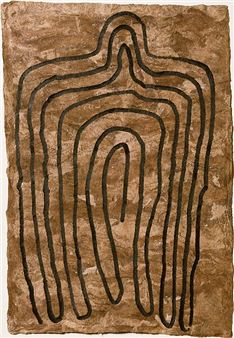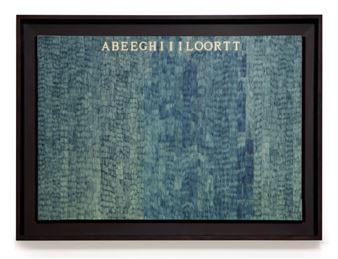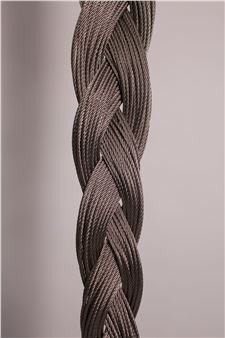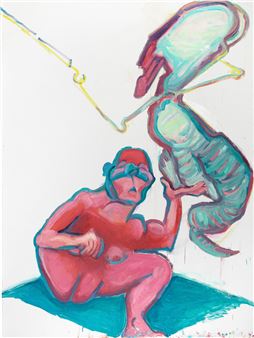Howardena Pindell: Deep Sea, Deep Space
White Cube Hong Kong presents Howardena PindellвҖҷs first solo exhibition in Asia, showcasing the multidisciplinary American artistвҖҷs recent paintings that draw inspiration from the visual splendours of the ocean and outer space, alongside the ongoing series вҖҳTesseractвҖҷ which emerges out of her early work. Multilayered, illusory and tactile, these works further PindellвҖҷs fascination with the macro and the micro, from the tensions between surface and depth to the relationship between the cosmic and the cellular.
One of the most defining motifs in PindellвҖҷs work is the circle, appearing in myriad variations вҖ“ ellipses, perforations, spray-painted dots and hole punches. Her use of this cosmic form is rooted in a childhood memory of the Jim Crow laws of enforced racial segregation in the United States. In 1951, when she was eight years old, during a family trip to northern Kentucky, her father stopped at a roadside root beer stand. Pindell recalls noticing red circles at the bottom of their cups, later learning that they were used to identify the utensils designated for Black customers. In the 1970s вҖ“ while working at MoMAвҖҷs Department of Prints and Drawings where she was the institutionвҖҷs first Black curator вҖ“ she sought to reclaim the circle by the pioneering use of a humble piece of office stationery to create works of art: the hole punch. She employed this tool to perforate cardstock, Manila folders and other materials, creating templates through which she would spray acrylic paint onto unstretched canvas to create diffuse constellations of atomised dots. This innovation ushered a further development in her practice, in which she used the hole-punched refuse as the primary medium, affixing and layering the tiny discs onto canvases which were cut and sewn back together in gridded formation вҖ“ counterbalancing the inherent order of the planar grid with the densely accrued confetti-like dots. Pindell regards the use of circles in her art as a therapeutic act: вҖҳI found that just transforming the circle into something positive was a task that seems ongoing.вҖҷ
A reciprocal relationship between PindellвҖҷs spray paintings and her works using hole-punched chads can be gleaned вҖ“ each technique fortifies the otherвҖҷs exploration of surface and depth, whether by the illusory nature of her canvases or the tactile dimensionality of piled paper. Originating from her 12 years of handling paper as a curator at MoMA and a lifelong fascination with the layering of textiles in African indigenous costume, PindellвҖҷs attraction to palimpsestic dimensionality is also informed by to her experiences in Asia. During a brief sojourn in Japan from 1981 to 1982, Pindell encountered the sumptuously illustrated 12th-century prayer scroll known as the Heike NЕҚkyЕҚ, housed in the Itsukushima Shrine near Hiroshima. In a 2021 interview, Pindell explained that the scrollвҖҷs layered media, used to create pictorial depth, continues to influence her approach to creating levelled worlds.(2) The examples of PindellвҖҷs cut-and-sewn, chadded canvases featured in this exhibition embody the fascination with physical science that motivates much of her recent work. Untitled #31 (The Solar System Is Beige), for example, playfully reinvents the cosmic order as gridded and monochrome, while City LightsвҖҰNight Flight is freer in form, the stitching looser and zigzagged, suggesting charts of the star-studded sky.
PindellвҖҷs вҖҳTesseractвҖҷ series вҖ“ named after the four-dimensional hypercube вҖ“ exhibits her virtuosic proficiency in building the illusion of depth, with circles, diamonds, cones, cylinders and other shapes orbiting or radiating from a central light source within an aeriform haze. Here, the influence of Japan is also evident in the primacy of colour and use of balletic asymmetries. Affirming the foundational primacy of the circle in PindellвҖҷs creativity, Tesseract #17, Tesseract #19 (Deep Space) and Tesseract #23 take as their focal point a backlit disc with concentric energy fields multiplying outwards; in Tesseract #18, this circle seems to have morphed into a bulbous marine creature, while Tesseract #20 revolves around a sunlike nucleus вҖ“ or a supernova вҖ“ of pink and yellow light.
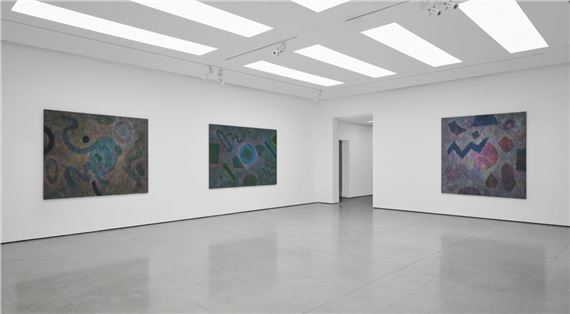
Recommended for you
White Cube Hong Kong presents Howardena PindellвҖҷs first solo exhibition in Asia, showcasing the multidisciplinary American artistвҖҷs recent paintings that draw inspiration from the visual splendours of the ocean and outer space, alongside the ongoing series вҖҳTesseractвҖҷ which emerges out of her early work. Multilayered, illusory and tactile, these works further PindellвҖҷs fascination with the macro and the micro, from the tensions between surface and depth to the relationship between the cosmic and the cellular.
One of the most defining motifs in PindellвҖҷs work is the circle, appearing in myriad variations вҖ“ ellipses, perforations, spray-painted dots and hole punches. Her use of this cosmic form is rooted in a childhood memory of the Jim Crow laws of enforced racial segregation in the United States. In 1951, when she was eight years old, during a family trip to northern Kentucky, her father stopped at a roadside root beer stand. Pindell recalls noticing red circles at the bottom of their cups, later learning that they were used to identify the utensils designated for Black customers. In the 1970s вҖ“ while working at MoMAвҖҷs Department of Prints and Drawings where she was the institutionвҖҷs first Black curator вҖ“ she sought to reclaim the circle by the pioneering use of a humble piece of office stationery to create works of art: the hole punch. She employed this tool to perforate cardstock, Manila folders and other materials, creating templates through which she would spray acrylic paint onto unstretched canvas to create diffuse constellations of atomised dots. This innovation ushered a further development in her practice, in which she used the hole-punched refuse as the primary medium, affixing and layering the tiny discs onto canvases which were cut and sewn back together in gridded formation вҖ“ counterbalancing the inherent order of the planar grid with the densely accrued confetti-like dots. Pindell regards the use of circles in her art as a therapeutic act: вҖҳI found that just transforming the circle into something positive was a task that seems ongoing.вҖҷ
A reciprocal relationship between PindellвҖҷs spray paintings and her works using hole-punched chads can be gleaned вҖ“ each technique fortifies the otherвҖҷs exploration of surface and depth, whether by the illusory nature of her canvases or the tactile dimensionality of piled paper. Originating from her 12 years of handling paper as a curator at MoMA and a lifelong fascination with the layering of textiles in African indigenous costume, PindellвҖҷs attraction to palimpsestic dimensionality is also informed by to her experiences in Asia. During a brief sojourn in Japan from 1981 to 1982, Pindell encountered the sumptuously illustrated 12th-century prayer scroll known as the Heike NЕҚkyЕҚ, housed in the Itsukushima Shrine near Hiroshima. In a 2021 interview, Pindell explained that the scrollвҖҷs layered media, used to create pictorial depth, continues to influence her approach to creating levelled worlds.(2) The examples of PindellвҖҷs cut-and-sewn, chadded canvases featured in this exhibition embody the fascination with physical science that motivates much of her recent work. Untitled #31 (The Solar System Is Beige), for example, playfully reinvents the cosmic order as gridded and monochrome, while City LightsвҖҰNight Flight is freer in form, the stitching looser and zigzagged, suggesting charts of the star-studded sky.
PindellвҖҷs вҖҳTesseractвҖҷ series вҖ“ named after the four-dimensional hypercube вҖ“ exhibits her virtuosic proficiency in building the illusion of depth, with circles, diamonds, cones, cylinders and other shapes orbiting or radiating from a central light source within an aeriform haze. Here, the influence of Japan is also evident in the primacy of colour and use of balletic asymmetries. Affirming the foundational primacy of the circle in PindellвҖҷs creativity, Tesseract #17, Tesseract #19 (Deep Space) and Tesseract #23 take as their focal point a backlit disc with concentric energy fields multiplying outwards; in Tesseract #18, this circle seems to have morphed into a bulbous marine creature, while Tesseract #20 revolves around a sunlike nucleus вҖ“ or a supernova вҖ“ of pink and yellow light.
Artists on show
Related articles
White Cube Hong Kong presents Howardena PindellвҖҷs first solo exhibition in Asia.

 ARTISTS
ARTISTS







